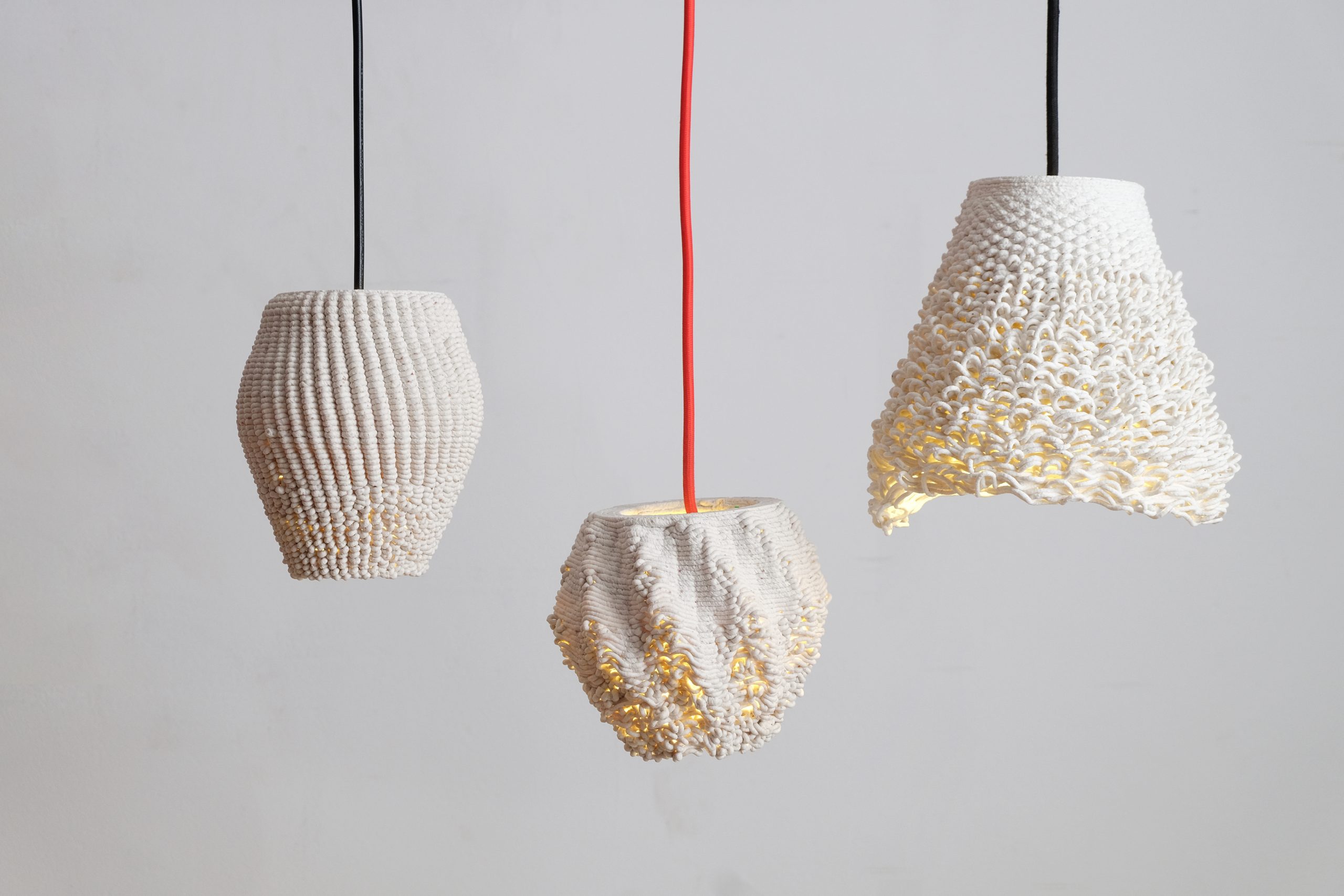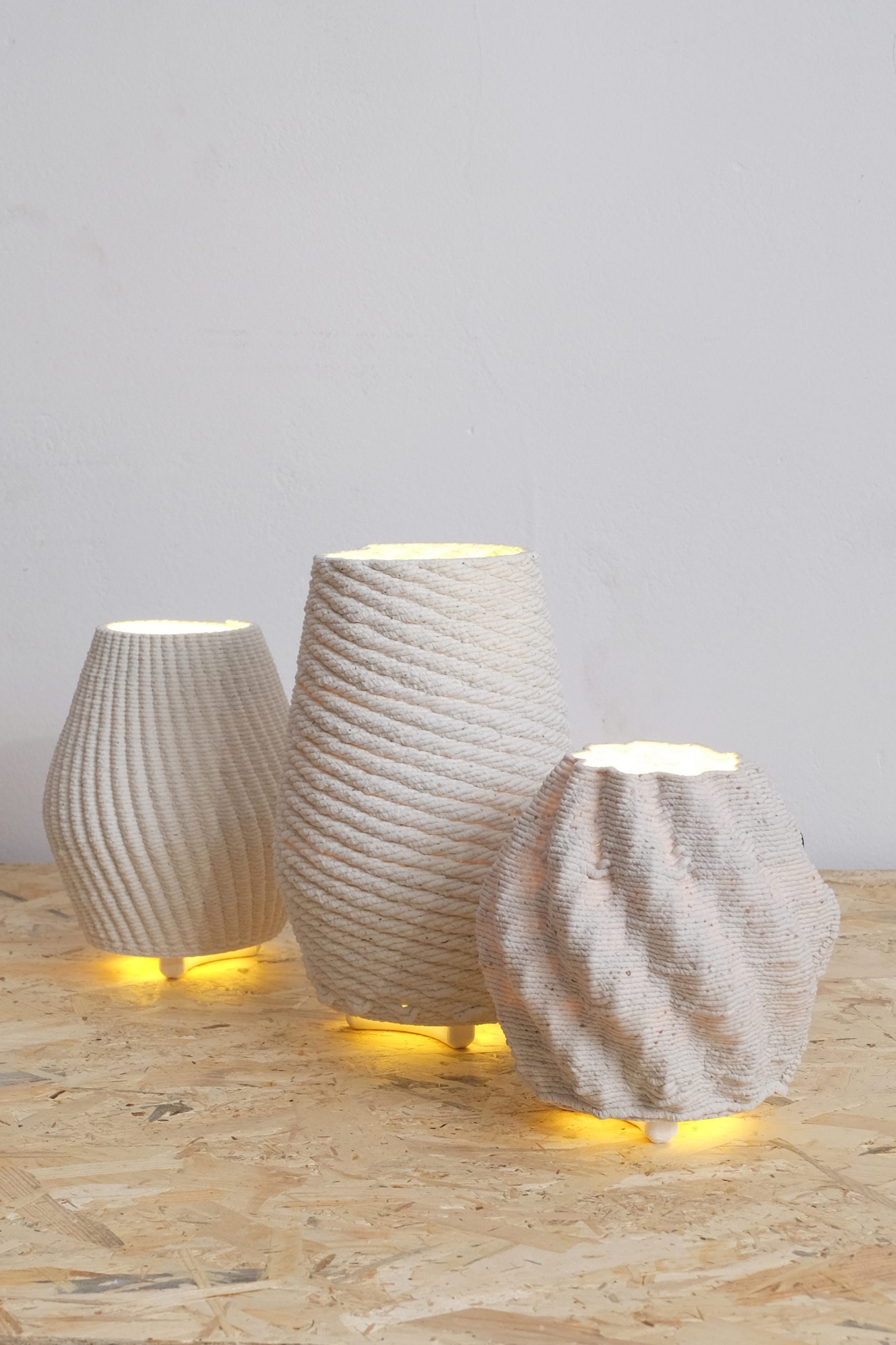Reprint Ceramics

Useful information
- Team members
- Hanneke de Leeuw Valeria Ustarez Rodriguez
- Country
- Netherlands
- Keywords
- Ceramics recycling 3D printing waste as resource parametric design
Short Description
‘Reprint Ceramics’ are 3D printed lamps, parametrically designed, made from recycled ceramics.
Detailed Description
‘Reprint Ceramics’ combines the special 3D clay printing technique developed by Coudre Studio from Spain with the methodology for upcycling discarded household ceramics (Remake Ceramics) by Fabrique Publique from The Netherlands.
By using post-industrial and post-consumer ceramics’ waste as a resource for making new high-quality products, the project shows that the use of waste can reduce supply chain costs, decrease the use of raw materials and improve the ecological footprint whilst making beautiful products.
The tactility, the look and feel, its organic structure, it all fits very well together. The lamps are really a showcase of both the material and the technique.
Reprint Ceramics is a joint initiative by Fabrique Publique and Coudre Studio, supported by the EU WORTH Partnership Project (https://www.worthproject.eu).
The idea behind Reprint Ceramics is to develop more circular options for the ceramics industry and show that ‘take - make - discard’ is no longer an option.
Project Details
- Does your design take social and cultural challenges and human wellbeing into consideration?
The preparation of the recycled material is meant to be outsourced to ateliers that work with people that have a distance to the labour market in order to ensure social innovation and social inclusion.
Further, our material and methodology can be used with designs that are common in a specific country, ensuring the heritage is preserved, fostered and promoted.
Specific packages could be made per country using the particular clay of that region.
- Does your design support sustainable production, embodying circular or regenerative design practices?
Printing with recycled ceramics has a positive impact on people and the planet in the sense that waste material is given a useful purpose. The ceramics’ waste material is put back into the production chain as a resource to be upcycled into new high-quality products. It also means less virgin material needs to be mined to make these new ceramics’ products.
- Does your design use principles of distribution and open source?
We are in the process to design an online platform to reach companies, designers and the general public where they can find open manuals with the printer and formulation documentation to make the information accessible to anyone.
This contributes to increase 3D printing literacy and awareness that these technologies exist and can be used to produce quality, sustainable products.
- Does your design promote awareness of responsible design and consumption?
By opening the possibility for consumers to give the product back once it breaks or is discarded, so it can be upcycled into new products, they can see for themselves that it’s a circular product. Furthermore, its tactility and look & feel give the products an added value compared to regular ceramics, which makes it more attractive.
We hope that this would also encourage other ceramics’ producers to start using their waste materials as a resource, which not only has ecological, but also economical benefits, since it means using less virgin clay and less costs for waste disposal.
Images


